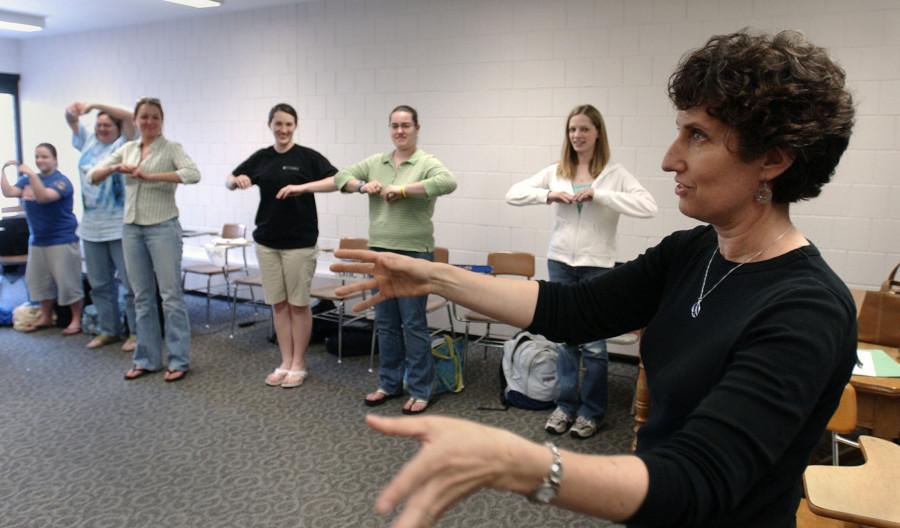Should we bring sign language to LHS?
Patty Gordon, foreground, a freelance sign language interpreter and teacher, leads an exercise during a sign language interpreting class.
September 24, 2015
Many schools have world language programs available for students, which helps the students to communicate in different ways. Almost all schools have Spanish and French classes, but what about American Sign language? According to Gallaudet University, it is the fourth most common language in America. Because of this, should we offer ASL as a world language at LHS?
The University of Maryland completer program requires students to take two credits of world language to graduate. The University of Maryland accepts sign language as one of their foreign languages.
Starting American Sign Language in high school could help students in college and beyond. Not only do many colleges offer classes in sign language, some offer offer a major in interpreting.
Gallaudet University is in Washginton, D.C., specializing in college education for deaf and hard of hearing students. Because they specialize in communications, they have many sign language classes, such as Sign language Teaching, Culture, and History, Sign Language Planning and Advocacy and more.
There are about 60 schools for the deaf in the U.S., including one in Frederick, the Maryland School for the Deaf. Because there’s a large community of people who are deaf and people who use ASL, there are more than 420 students attending the School of the Deaf.
Providing this language as a class at Linganore could be very beneficial for students. Students who respond well to physical movement or have a learning disability might find ASL easier to learn than a traditional language.
“We are becoming a global society. Learning another language and understanding their culture helps us collaborate with other communities and helps us make connections in meaningful ways,” said Ms. Michelle Morales, an ASL teacher at Tuscarora High School. “Learning another language is important for college and career readiness.”
Many states count ASL as a world language, but not all of them. This is because the words are the same to English, so some believe it’s too close to English to be a foreign language. American Sign Language and English use the same words, but the sentence structure is different in ASL. With American Sign Language the words can be flipped around in a different order and it will still make sense.
People who learn ASL can write in English. Therefore, if students are learning ASL, they are not, technically, learning the pronunciation, grammar structure and culture of another country.
The deaf community DOES have a culture, though. And this is important to those who support learning ASL. Morales said, “learning ASL is not about just learning a language. You learn about deaf culture, history, art, folklore, politics, education, perspectives, attitude…”
Morales added, “Learning ASL will expand your knowledge about another community. Learning World Language will make your think about and analyze your own language and your own community (family, town, state…) and compare it with another language and culture that you are studying.”
Another challenge of bringing American Sign Language back to our school is that there aren’t many people certified to teach ASL. This is because not all people who learn ASL want to teach it or are capable of teaching it. Most people who do go into a job using ASL will interpret, partly because of its pay. The amount the interpreter makes is different for different jobs, depending on who they’re interpreting for.



